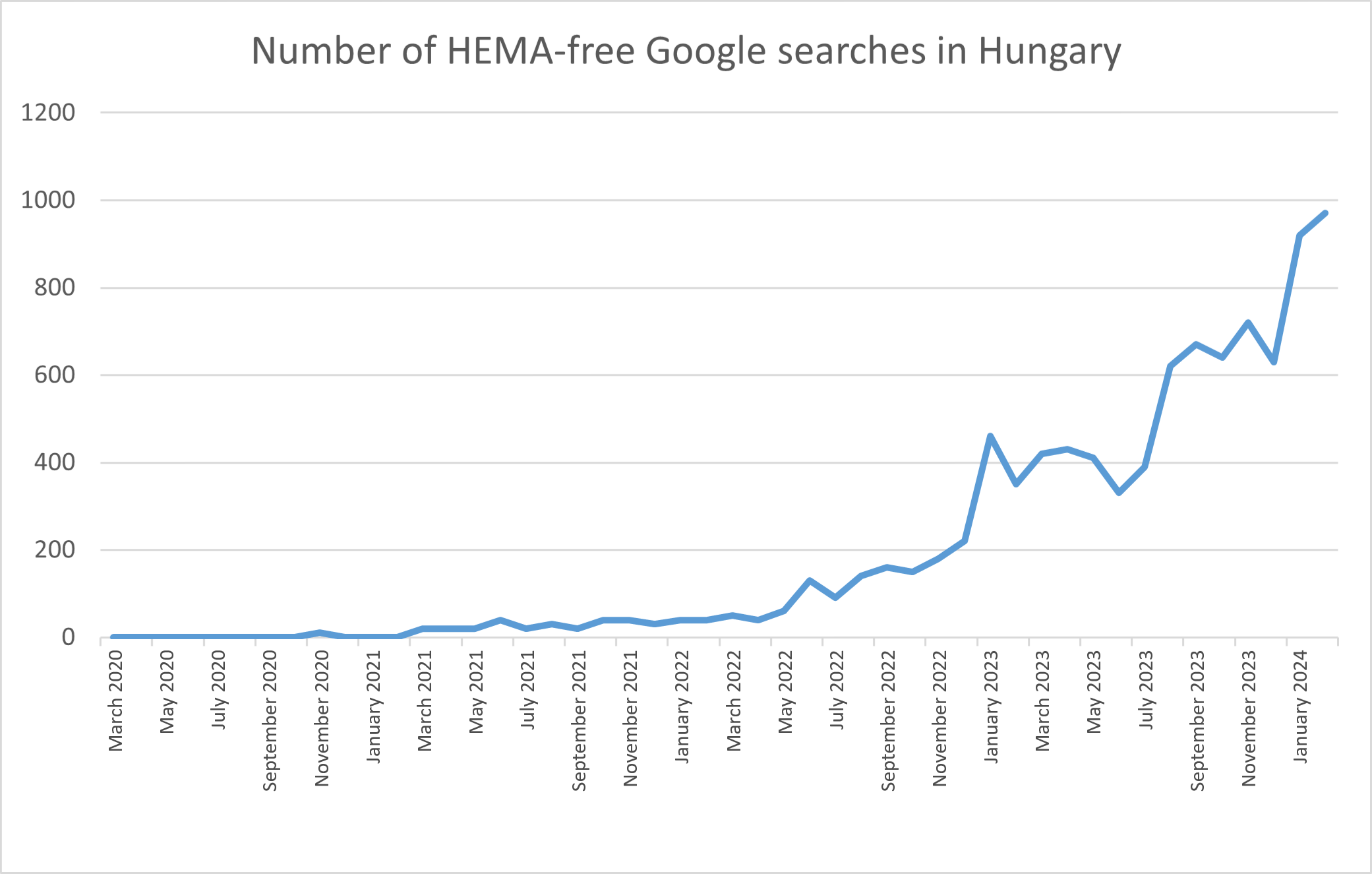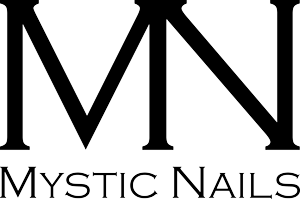Everything you need to know about HEMA!
The HEMA-free madness should avoid you. Amen.
Uh-oh! Big trouble.
That's pretty much what I can say when I look at the general perception of HEMA-free topic in the nail market.
I would add, not in vain; and I would also add, that a nail technician should be a stout fellow, if she can actually peel out of so much erroneous, misleading and misleading information what the hell it is that we really need to know and consider in the HEMA-free craze.
Because we are now at the point where HEMA is the Brussels, Soros and migrants of the nail industry. It is slowly growing into a buzzword, we are angry with it, we fear it, we are wary of its presence, but we don't really know why, mostly because we have been told it is dangerous!
But who exactly said it and what exactly did they say?
Yes, now I'm not talking about marketing colleagues or self-proclaimed experts in Facebook groups, because they do say a lot of things, but unfortunately with typically unjustified and with little basis, but about decision-makers, law and regulation makers. What do they say, why is this HEMA so diabolical?
Now, let's start with what HEMA is.
HEMA is the collective name for HEMA solvent (2-Hydroxyethyl methacrylate) and Di-HEMA resin(Di-HEMA trimethylhexyl dicarbamate).
What resin, what solvent? You may rightly ask.
In short, you should know that the 3 main ingredients of gel polishes and nail gels are resin (50-95%), some kind of solvent (5-50%) and also some kind of photoinitiator like TPO or TPO-L or 1-Hydroxycyclohexyl phenyl ketone (about 1%). Of course, there may be pigments, maybe mica and other auxiliaries, but these are the 3 main ingredients.
As you can see, a gel polish or gel is mostly from resin and solvent, which can be HEMA, but can also be other, since HEMA can be substituted with other resins or solvents, as many people are doing now (hopefully not just according to the ingredient list on the label).
But why would we replace it? The short answer is: because of SCCS.
SCCS stands for Scientific Committee on Consumer Safety. They are the reason this blog was written in the first place, because a study published by this EU committee in 2018 pointed out that, based on consumer feedback and experience, they believe that HEMA may cause allergic reactions in susceptible individuals, and they have proposed that from 3 June 2021, all products containing HEMA or Di-HEMA in the EU should be required to carry a label that states "may cause allergic reactions".
That's fine so far, the problem started when Eddy the marketer (see video below) thought it would be a great idea to tell the market that HEMA is an ingredient that you should be wary of if you don't want an allergic reaction and we're so cool that we'll give you a couple of HEMA-free alternatives that you can buy straight away, to everyone's great satisfaction.
And the panic is on. The hysteria. The depression. A toxic miasma of doubt permeated the entire nail profession, as if a suspiciously brown gel polish had just been poured on the back of your neck, so that you could have a bucket of something (HEMA) thrown down your throat. And ever since then, we can't do anything about it because we just keep getting the marketing crap. So far.
But now we're going to fix this story, I promise.
I'm not going to beat around the bush, I'm going to get to the point: to say that there is less chance of allergic reactions when using HEMA-free products is, in my opinion, a gross misstatement. I base my opinion on thestatement of chemical engineers and even official tests, but more on the latter a bit later.
The fact is that all resin-solvent based nail materials (i.e. gel, gel polish, acrylic gel, colour gel, painting gel...etc.) have almost the same allergenic, irritant, sensitising risk, regardless of whether they are HEMA-free or not, because the resin or solvent used instead of HEMA carries the same risk, but the ingredient is not yet listed by the SCCS committee. You know SCCS, we talked about it earlier.
So that's just the difference between products containing HEMA and products without HEMA: the former are required to say "may cause allergic reaction", the latter are not, but they can cause allergic reactions in virtually the same way.
This is exactly why we, at Mystic Nails, have never considered it appropriate to indicate on our products whether or not they contain HEMA, as it is completely pointless. However, there has been so much hype and propaganda about HEMA in the nail market over the last year or two due to the marketing practices of competitors that we have been faced with the practical disadvantage of not indicating HEMA-free in our products.
To prove this, here is a graph of the number of HEMA-free searches on Google over the last 3 years:

Remember that the warning "may cause allergic reaction" is mandatory on the labels of products containing HEMA/Di-HEMA from 3 June 2021? It seems to be there was some buzz there, but nothing remarkable until a year later when someone thought what a great marketing idea it would be to shove HEMA-free in the face of the market! And that's where the hysteria started, which led to the fact that today there are nearly 1000 searches on HEMA-free in Google a month in Hungary and the trend is that this will only increase.
Well, that's how it could happen that from 18 March 2024 to 19 March 2024, in one day, we suddenly had more than 160 HEMA-free products in our webshop. That's the pace of innovation, isn't it? Let's savour this a little: we have more than 160 products that are HEMA-free by default, but we didn't feel the need to communicate this before and frankly we shouldn't now, but the market and its marketing-driven manipulation now forces us to.
Does this mean that the HEMA exemption has no justification?
But it does, for those who are specifically sensitive to HEMA, because at least they know which products are suitable for them, but for everyone else it has about zero added value whether a product is HEMA-free or not, whether it's for a nail technician or a guest.
But what is it that has no relevance in a HEMA-free context?
1) Creating hysteria in the marketplace over something that is completely unjustified. And here I don't mean the legislature, I mean the nice marketing colleagues and the shouting of self-proclaimed experts on social media platforms.
2) Advertising bullshit as a product benefit (see video below)
3) Misleading and fooling customers. (also detailed in the video below)
Is HEMA-free also hypoallergenic?
I get this question a lot, or even worse, companies and brands claiming this about their product, that since it is HEMA-free it means it is hypoallergenic.
But back to the original question of whether something that is HEMA free is hypoallergenic, my answer is NO.
A bit more on that: bloody NO.
A bit more: product is not hypoallergenic because it does not contain HEMA, but because the product is designed to minimise its allergenicity. However, the developer (brand owner, distributor) of the product must have the evidence to support this statement, because it is easy to say anything, but much harder to prove.
Finale: the HEMA-free march mourning dance
And then, to give the final nudge to the "legal basis" for HEMA-free hysteria and madness, I'd like to say that Mystic Nails came out with a development in the spring of 2024 that, (although it's only April, I'm still anticipating as the bang of the year): the release of our Sensitive product line, a proven hypoallergenic range!
These products have all received official hypoallergenic certification based on testing by an international accredited laboratory. Interested in how such a test is carried out? Read more about it here.
But the point is that at launch, the Sensitive range included 5 gel-based products, all of which have apparently been certified hypoallergenic in the official test, but 4 of these 5 gels contain HEMA. I will leave time to process this...
And if you're over it, watch the video below, where I will explain further, what you need to know about HEMA and hypoallergenic nail materials.
Hi,
Laci Gyimesi
CEO, Mystic Nails





